Mohammed Bouazizi
description: a Tunisian street vendor who set himself on fire in protest of police corruption, sparking the Tunisian Revolution and wider Arab Spring
60 results
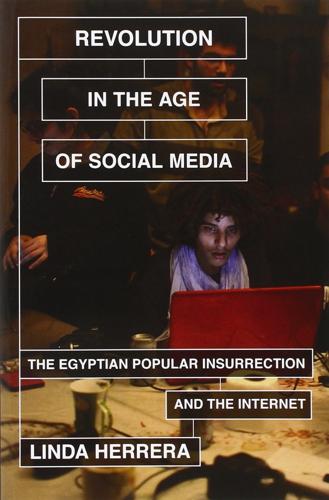
Revolution in the Age of Social Media: The Egyptian Popular Insurrection and the Internet
by
Linda Herrera
Published 14 Apr 2014
In an article titled “How Tunisia’s Revolution Began,” Yasmine Ryan recounts a tale that involves two male relatives, a mother, a peaceful protest, Facebook, and Al Jazeera: In Sidi Bouzid … locals fought to get news of what was happening out, and succeeded. Rochdi Horchani—a relative of Mohamed Bouazizi … helped break through the media blackout. On December 17, he and Ali Bouazizi, a cousin of Mohamed Bouazizi, posted a video of a peaceful protest led by the young man’s mother outside the municipality building. That evening, the video was aired on Al Jazeera’s Mubasher channel. Al Jazeera’s new media team, which trawls the web looking for video from across the Arab world, had picked up the footage via Facebook.2 What the author left out of her account was that the satellite station, Al Jazeera Mubasher, does not operate as a neutral and objective television platform.
…
Judging from their online posts, the young Salafists in the community tried to turn Sayed Bilal into a symbol for all the mistreatment they suffered at the hands of the Mubarak police state. They tried to construct Sayed Bilal as the new martyr who could rouse people to revolt. In the midst of these tumultuous events in Egypt, a mass uprising was brewing in Tunisia, sparked by its own celebrity martyr, Mohamed Bouazizi. On January 13, 2011, twenty-eight days into the Tunisian revolt, an image of two hands symbolizing Tunisia whispering into the ear of Egypt appeared on the wall of the Khaled Said page. It included these words: “From the people of Tunisia to the people of Egypt. We hope the message arrives from Tunisia to bring freedom.
…
In the lead-up to January 25, the Khaled Said community of predominantly high school and college students found themselves grappling with a host of complex issues pertaining to martyrdom, suicide, and poverty. At this moment of genuine deliberation, they struggled to find their collective voice and ethical positions. In both Tunisia and Egypt, the tragic story of a young manturned-martyr became the trigger for revolt. In Tunisia, Mohamed Bouazizi doused his body in kerosene outside a municipal building and set himself ablaze. In Egypt, plainclothes police officers beat Khaled Said in view of neighbors. These two men became symbols of mass movements, the detonators which touched the fiber of people and the hooks that motivated them to join, as the anti-FARC campaigner Oscar Morales wrote about in the AYM manual for cyberdissidents.
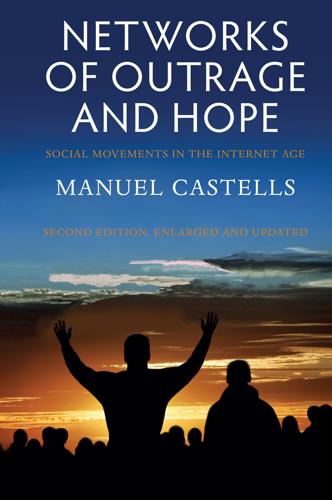
Networks of Outrage and Hope: Social Movements in the Internet Age
by
Manuel Castells
Published 19 Aug 2012
And, while there were already a number of precedents of such new social movements in the last decade (particularly in Spain in 2004 and in Iran in 2009), we may say that in its full-fledged manifestation it all started in Tunisia and in Iceland. TUNISIA: “THE REVOLUTION OF LIBERTY AND DIGNITY”1 It began in a most unlikely site: Sidi Bouzid, a small town of 40,000 residents in an impoverished central region of Tunisia, south of Tunis. The name of Mohamed Bouazizi, a 26-year-old street vendor, has now been engraved in history as the one who changed the destiny of the Arab world. His self-immolation by fire at half past eleven on the morning of December 17, 2010 in front of a government building was his ultimate cry of protest against the humiliation of repeated confiscation of his fruit and vegetable stand by the local police after he refused to pay a bribe.
…
Intense working-class struggles had taken place in Ben Guerdane (2009) and in the phosphate mines of Gafsa (2010), but they were violently repressed with scores of people killed, injured and arrested, and ultimately contained. Dissidents were tortured and jailed. Street demonstrations were rare. We know that the spark of the revolt came from the sacrifice of Mohamed Bouazizi. But how did the spark set fire to the prairie and how and why did it spread? New, distinctive factors made possible the success of the Tunisian popular revolts in 2011 over a sustained period of time. Among these factors appears prominently the role played by the Internet and Al Jazeera in triggering, amplifying and coordinating spontaneous revolts as an expression of outrage, particularly among the youth.
…
But it will do so with a reasonably democratic polity in place and, more importantly, with a conscious and active civil society, still occupying cyberspace and ready to come back into the urban space if and when necessary. Whatever the future will be, the hope for a humane and democratic Tunisian society will be the direct result of the sacrifice of Mohamed Bouazizi and of the struggle for the dignity he defended for himself, which had been taken up by his compatriots. ICELAND’S KITCHENWARE REVOLUTION: FROM FINANCIAL COLLAPSE TO CROWDSOURCING A NEW (FAILED) CONSTITUTION2 The opening scenes of what is perhaps the best documentary film on the global financial crisis of 2008, Charles Ferguson’s Inside Job, showcase Iceland.
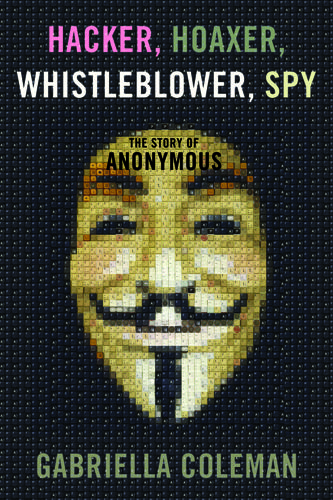
Hacker, Hoaxer, Whistleblower, Spy: The Story of Anonymous
by
Gabriella Coleman
Published 4 Nov 2014
The excesses of the Ben Ali family are growing.6 On December 17, 2010, three weeks after Nawaat.org released the translated cables, an unrelated act of desperation ripped open the soul of the nation. Mohammed Bouazizi—a young fruit and vegetable seller—was accosted by the police, who seized his unlicensed food cart and refused to return it even after Bouazizi offered to pay the fine. His first attempt at retrieving his cart was a frustrating failure. Low-level government officials refused to even talk to him. Doubly insulted, with a family of eight to feed, he set himself on fire. Powerless and voiceless in one moment he became, in the next, impossible to ignore: but at the terrible cost of his life. Protests began in Sidi Bouzid, the city where Mohammed Bouazizi resided. Quickly they radiated out in every direction.
…
Any organization involved in censorship will be targeted and will not be released until the Tunisian government hears the claim for freedom to its people. It’s on the hands of the Tunisian government to stop this situation. Free the net, and attacks will cease, keep on that attitude and this will just be the beginning. The Tiger Consumes Four Chickens a Day But let’s back up to the onset of revolution itself. Mohammed Bouazizi, WikiLeaks and Nawaat, and Chelsea Manning all deserve thanks for its inception. In 2010, living under the Ben Ali regime since 1989, scores of Tunisians were downtrodden, living in deplorable conditions, and fearful as human rights abuses—torture, censorship, and detentions—intensified in the country.
…
A network of a few thousand, Takriz generally refuses to cooperate with journalists, bandies about obscenity as a shock tactic, and proudly embraces anonymity. Its current Twitter account reads: “Tunisian cyber think/fight tank & street resistance network since 1998. Free, True & Anonymous—Takrizo Ergo Sum—We make revolutions!”8 Mohammed Bouazizi passed away from his burns on January 4, 2011, and the next day an estimated five thousand mourners attended his funeral, many of them chanting, “Farewell, Mohammed, we will avenge you. We weep for you today, we will make those who caused your death weep.”9 The next day, 75 percent of the nation’s lawyers went on strike, calling for an end to the crackdown.10 Tunisians from all walks of life—teachers, union members, students—joined the fray.
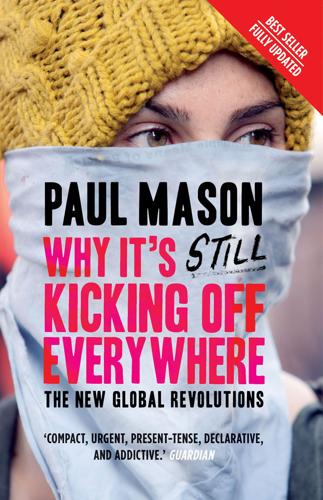
Why It's Still Kicking Off Everywhere: The New Global Revolutions
by
Paul Mason
Published 30 Sep 2013
In my book Meltdown, in June 2010,1 grappled with the reasons for this deep psychological complacency: It appears—because it has been the case for twenty years—that every problem is solvable … that no matter how badly the world economy slumps there is a pain-free way out of it. Once the realization dawns that there is not, and that the pain will be severe, the question is posed that has not really been posed for twenty years: who should feel it?14 Now, that question had become concrete. On 17 December 2010, a street vendor called Mohamed Bouazizi walked into the traffic in the Tunisian backwater of Sidi Bouzid, carrying a can of gasoline, and set himself on fire: he had, he claimed, been slapped by a corrupt local official, and his street goods had been confiscated. Within eight months, what began with Bouazizi had ripped away the fabric of autocratic rule across the Middle East.
…
And in no-hope towns where the college is the only modern thing in the landscape, everyone rubs shoulders in the laundromat, the fast-food joint, the cramped carriages of late-night trains. In North Africa, though many of the college students who led the revolutions were drawn from the elite, you find this same blurring of the edges between the educated youth and the poor. The story of Mohamed Bouazizi, the street trader whose self-immolation on the morning of 17 January 2011 sparked the revolution in Tunisia, illustrates this well. He can’t get a job because, in a corrupt dictatorship, he lacks the right connections. He’s a street vendor earning $140 a month, but he’s using the money to put his sister through college.6 The 2008 uprising in Mahalla, Egypt, saw this same overlap of worker, student and urban poor.
…
Though the old multiuser games still hold their attraction for millions of geeky people, the newest, most satisfying and most immersive user experience is reality. As I write this, for example, at 23:00 BST on 20 August 2011, my own Twitter feed is exploding with accounts, from people on the ground, of the final offensive of the insurgents against Gaddafi in Tripoli: ‘Never forget Mohamed Bouazizi’ ‘Do you guys realize #Libya is right on the verge of being the FIRST, REAL DEMOCRACY in the MiddleEast!!!’ ‘Its about time #Eygpt recognizes the NTC as a representative of the Libyan people ! #Libya …’ ‘Late night celebrations in #zawiya at the news of uprisings in #tripoli. huge booms from poss.
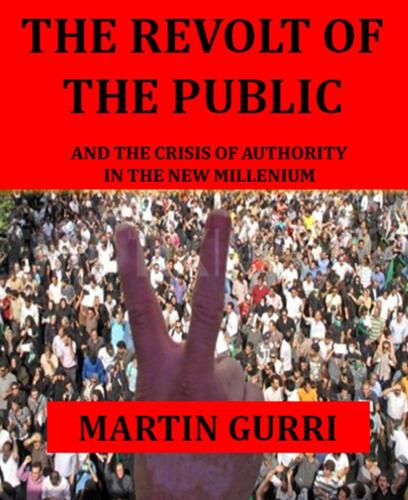
The Revolt of the Public and the Crisis of Authority in the New Millennium
by
Martin Gurri
Published 13 Nov 2018
Less than three weeks after the first anti-regime protests, the country’s president of very long standing, Zine El Abidine Ben Ali, fled to Saudi Arabia. The question, for us, is the degree to which the Fifth Wave of information was implicated in this outcome. The catalyst for the Tunisian uprising came in the form of a truly insignificant man: Mohamed Bouazizi, a street vendor in the provincial town of Sidi Bouzid, who set himself on fire in despair over humiliations he had endured at the hands of regime officials, and later died of his burns. You will note that I wrote “catalyst” rather than “cause”: even the simplest human events constitute complex systems ruled by nonlinearities.
…
Without words, seemingly untainted by special pleading, it told the story of a man driven by his rulers beyond the last measure of despair. The photos of Bouazizi’s self-immolation were posted on Facebook, and aroused strong emotions in and out of Tunisia. In contrast, the unphotographed Trimech died a faceless shadow. 2.3 Man on fire: Mohamed Bouazizi, December 16, 2010[12] Tunisia’s revolution demonstrated one decisive change between the old and new information dispensations. The industrial age depended on chunky blocks of text to influence government and opinion. The new digital world has preferred the power of the visual. What is usually referred to as new media really means the triumph of the image over the printed word.
…
Enormous numbers of protesters – thousands, if not tens of thousands – covered most of the ground space in the square. This was when I realized Jan25 had succeeded. It would be marked as a historic day for Egypt’s opposition movement.[39] But the January 25 protests had been inspired in large part by the success of the Tunisian crowds in chasing Ben Ali from power. Images of Mohamed Bouazizi’s self-immolation had reached Egypt as well as Tunisia. His death was mourned by the public in both countries. Members of the Tunisian crowd had documented their existence with the use of cell phone video. In Tunisia, these videos could not be posted directly to the web, but Al Jazeera obtained and broadcast them into Egypt and the rest of the world – and by this path they entered the web, where they could be searched and viewed at will.
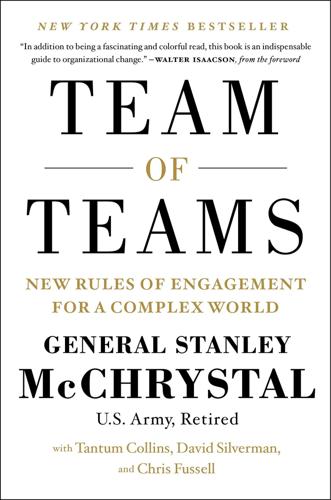
Team of Teams: New Rules of Engagement for a Complex World
by
General Stanley McChrystal
,
Tantum Collins
,
David Silverman
and
Chris Fussell
Published 11 May 2015
With simple study and a basic computer, they can come to far more refined conclusions about him than the Ottoman governor in 1882 could have. But in 2010 the range of outcomes that this Tarek can generate is far greater than his government can anticipate, because he lives in a vastly more complex world. The first Tarek is fictional. The second is Tunisian fruit vendor Tarek al-Tayeb Mohamed Bouazizi, and when he douses himself with gasoline and self-immolates, events spiral out of control at breakneck speed: A crowd protests his death, and his cousin records the scene on his iPhone. Videos appear on YouTube within two days, along with a picture of Tarek, aflame and dying. More protests erupt.
…
An operation on one side of the country would spontaneously incite reactions from a cell on the other that we did not even know existed; one misstep of ours or one piece of effective AQI propaganda could make the social media rounds and spark riots within hours; one video of a militant attack would have an immediate effect on insurgent recruitment numbers and sectarian reprisals, and all of these events happened almost every day. • • • In fact, the developments of recent years have led to a completely different—and less predictable—world. Because of speed and interdependence, street vendor Tarek al-Tayeb Mohamed Bouazizi could set off a chain of events that toppled multiple governments faster than the rest of the world could even process the news. Of course, there were successful revolutionaries and butterfly-effect phenomena before the information age, but new technologies have created an unprecedented proliferation of opportunities for small, historically disenfranchised actors to have a butterfly effect.
…
There are too many events occurring simultaneously for any entity—even one equipped with the surveillance capabilities of our Task Force—to monitor; and with the ability of individuals and small groups to communicate with millions of people, there is no way to be sure which of those events will transform into a threat. Events like the YouTube spread of Tarek al-Tayeb Mohamed Bouazizi’s protest, the hacker attack on AP, and Dave Carroll’s explosively popular ballad—along with the whole family of “viral” disruptions that characterize contemporary life—were unthinkable thirty years ago. Even the word “viral” hints at the fact that today’s environment resembles an organism or an ecosystem—the kind of interconnected system whose crisscrossing pathways allow phenomena to spread.
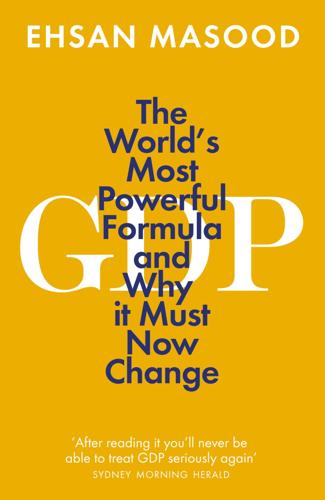
GDP: The World’s Most Powerful Formula and Why It Must Now Change
by
Ehsan Masood
Published 4 Mar 2021
Tunisia is now famous as the crucible for the uprisings in 2011, commonly referred to as the Arab revolutions, and frequently mischaracterized as the Arab Spring. The revolutions were ignited when Mohamed Bouazizi, a young street vendor, set himself alight on December 17, 2010, in the middle of busy traffic in his hometown of Sidi Bouzid. The young man, his family’s sole breadwinner, took this extreme action because he did not have enough money to bribe his city’s corrupt police; such a bribe would allow him to continue trading. After a fruitless altercation with a state official, he doused himself with gasoline and set himself alight, shouting, “How do you expect me to make a living?” Mohamed Bouazizi died from his burns eighteen days later. Until the day of Bouazizi’s suicide, Tunisia, according to economists and watchers of world politics, including yours truly, was a prosperous and relatively modern liberal Arab state with a growing economy.
…
A parent who chooses to scale back his or her hours, to work part-time, might be good news for the children, but that choice is bad news as far as government growth accountants are concerned. Sarkozy had a second and possibly more important concern about GDP. Recall the example from Tunisia: in the years leading up to the tragic suicide of Mohamed Bouazizi, Tunisia’s economy was celebrated as a regional icon of growth. Successive quarterly announcements of GDP’s steady growth masked the gulf in inequality. And recall that in rich countries, rising GDP concealed the continued existence of an underclass. One of the canniest politicians of his generation, Sarkozy believed that the example from Tunisia showed how indicators such as GDP were potentially threatening to nothing less than the survival of democracy.
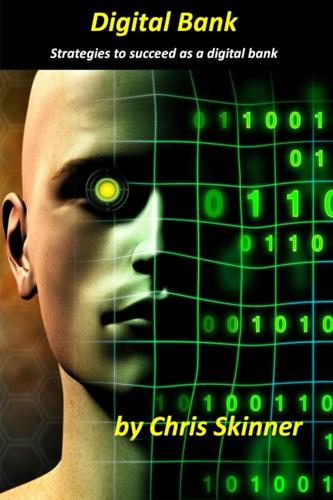
Digital Bank: Strategies for Launching or Becoming a Digital Bank
by
Chris Skinner
Published 27 Aug 2013
That is why Time Magazine named their 2011 Person of the Year as The Protestor, rather than an individual. An unusual move but, during 2011, there were so many examples of individual action that Protestors could not be ignored, and these were the combined forces of many individuals ignited by one, such as Mohamed Bouazizi. Tarek al-Tayeb Mohamed Bouazizi was a 26 year old market trader in Sidi Bouzid, Tunisia, who was regularly harassed by municipal police officers for illegal market trading. Although his trading was not actually illegal, it was the fact that Bouazizi had no money to bribe the officers that they haraseed him, continually moving him along and confiscating his goods.
…
This hit MasterCard’s 3D Secure and broadband payments services, and went viral using the term Operation Payback: “an anonymous, decentralized movement which fights against censorship and copywrong.” As can be seen, the power of today’s internet must not be underestimated, as who would have thought that Gadaffi, Mubarak and others would have been deposed due to the fire of Mohammed Bouazizi, a Tunisian market stall holder and his note left on Facebook? This is why Josef Ackermann, former CEO of Deutsche Bank stated in 2012 that: “we have a social responsibility, because if this inequality increases in income distribution or wealth distribution we may have a social time bomb ticking and no-one wants to have that.”
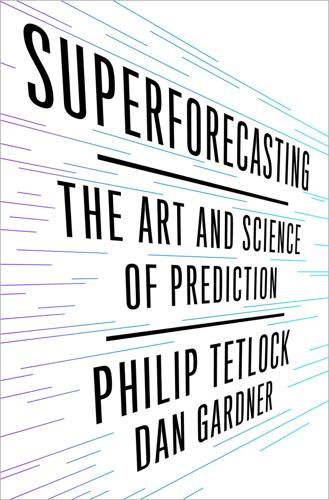
Superforecasting: The Art and Science of Prediction
by
Philip Tetlock
and
Dan Gardner
Published 14 Sep 2015
There are countless poor street vendors in Tunisia and across the Arab world. Police corruption is rife, and humiliations like those inflicted on this man are a daily occurrence. They matter to no one aside from the police and their victims. But this particular humiliation, on December 17, 2010, caused Mohamed Bouazizi, aged twenty-six, to set himself on fire, and Bouazizi’s self-immolation sparked protests. The police responded with typical brutality. The protests spread. Hoping to assuage the public, the dictator of Tunisia, President Zine el-Abidine Ben Ali, visited Bouazizi in the hospital. Bouazizi died on January 4, 2011.
…
Elsewhere, protests swelled into rebellions, rebellions into civil wars. This was the Arab Spring—and it started with one poor man, no different from countless others, being harassed by police, as so many have been, before and since, with no apparent ripple effects. It is one thing to look backward and sketch a narrative arc, as I did here, connecting Mohamed Bouazizi to all the events that flowed out of his lonely protest. Tom Friedman, like many elite pundits, is skilled at that sort of reconstruction, particularly in the Middle East, which he knows so well, having made his name in journalism as a New York Times correspondent in Lebanon. But could even Tom Friedman, if he had been present that fatal morning, have peered into the future and foreseen the self-immolation, the unrest, the toppling of the Tunisian dictator, and all that followed?
…
He meant that if that particular butterfly hadn’t flapped its wings at that moment, the unfathomably complex network of atmospheric actions and reactions would have behaved differently, and the tornado might never have formed—just as the Arab Spring might never have happened, at least not when and as it did, if the police had just let Mohamed Bouazizi sell his fruits and vegetables that morning in 2010. Edward Lorenz shifted scientific opinion toward the view that there are hard limits on predictability, a deeply philosophical question.4 For centuries, scientists had supposed that growing knowledge must lead to greater predictability because reality was like a clock—an awesomely big and complicated clock but still a clock—and the more scientists learned about its innards, how the gears grind together, how the weights and springs function, the better they could capture its operations with deterministic equations and predict what it would do.
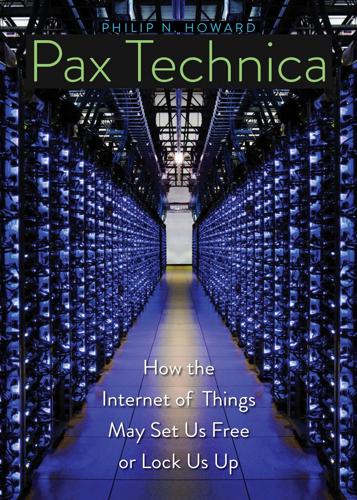
Pax Technica: How the Internet of Things May Set Us Free or Lock Us Up
by
Philip N. Howard
Published 27 Apr 2015
As a region, North Africa and the Middle East were noticeably devoid of popular democracy movements, at least until the early months of 2011. The internet was part of the story of Tunisia’s recent popular uprising. Yet it wasn’t simply a new communications tool for the propaganda of democracy advocates. Many Tunisians had been disaffected for a long time, but organized opposition grew online. Digital images of the burned body of Mohamed Bouazizi circulated by mobile phone within the country and eventually across North Africa. The activists behind the Arab Spring used digital media for propaganda and organization. Their revolutionary spirit spilled across borders. Using a combination of social media and agile street tactics, they toppled multiple dictators in a surge of unrest that has been called the “fourth wave” of popular uprising for democracy.26 Both events are difficult to understand without considering the importance of digital media.
…
Increasingly, however, people document the suffering of their loved ones. In Iran, in 2009, Neda Agha-Soltan was shot dead at a street protest, and the video of her blood pooling in the streets of Tehran inspired immense public outrage.58 This video inflamed the largest protests since the Iranian revolution of 1979. In Tunisia, in December 2010, Mohamed Bouazizi’s self-immolation depressed Tunisians, then enraged them to open insurrection. In Syria, in April 2011, Hamza Ali Al-Khateeb, a thirteen-year-old boy, was brutally tortured and then killed, helping to fuel a civil war.59 In Bahrain, in August 2011, Ali Jawad al-Sheikh was killed when a police tear-gas canister struck him in the head.
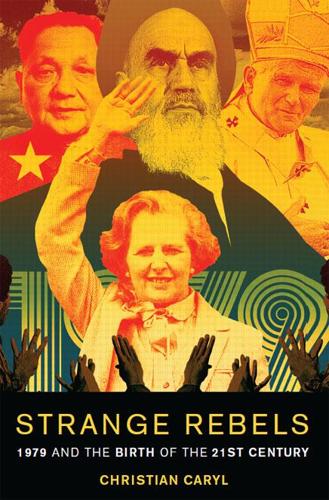
Strange Rebels: 1979 and the Birth of the 21st Century
by
Christian Caryl
Published 30 Oct 2012
Oxford University Press, USA, 2004. 7. “What Is Man Afraid Of?,” Redemptor Hominis, John Paul II, http://www.vatican.va/edocs/ENG0218/PG.HTM#$2Q. 8. Kanan Makiya, interview with the author, Cambridge, MA, September 29, 2009. 9. “Mohammed Bouazizi: The Dutiful Son Whose Death Changed Tunisia’s Fate,” Peter Beaumont, Guardian, January 20, 2011, http://www.guardian.co.uk/world/2011/jan/20/tunisian-fruit-seller-mohammed-bouazizi. 10. “A Shi’ite Victory That Subverted Shi’ite Tradition,” Jeffrey Donovan, Radio Free Europe/Radio Liberty, February 10, 2009. 11. For a more detailed exploration of modern Shenzhen, see Postcards from Tomorrow Square: Reports from China, James Fallows. 12.
…
The dream of the brotherhood of man was a powerful one, but it could not compete, in the final analysis, with the brotherhood of believers. The man who started the Arab Spring was not an Islamist. On December 17, 2010, a twenty-six-year-old street vendor in Tunisia, a high school graduate with an income of some $140 a month, changed the course of history. That day Mohammed Bouazizi went to a local government office in his hometown of Sidi Bouzid to register a protest against the police who had confiscated his vegetable cart. The official in charge refused to see him or acknowledge his complaints. Bouazizi doused himself with gasoline and set himself alight.9 Bouazizi’s death touched off a revolution in his home country that quickly found emulators across the Arab world.
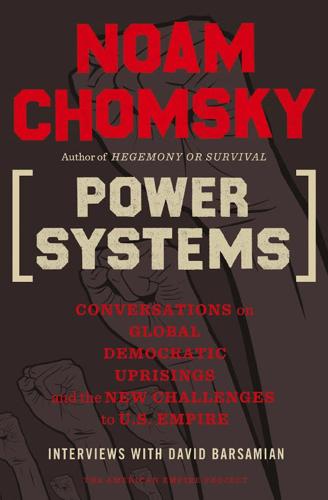
Power Systems: Conversations on Global Democratic Uprisings and the New Challenges to U.S. Empire
by
Noam Chomsky
and
David Barsamian
Published 1 Nov 2012
If people are made to feel helpless, isolated, atomized, then power will win. These issues are pretty severe. Right now, for example, we are really facing the prospect of something like species destruction for the first time in human history. 3 Uprisings CAMBRIDGE, MASSACHUSETTS (JANUARY 17, 2012) Mohamed Bouazizi, a young street vendor in a small town in Tunisia, in despair burned himself to death.1 That led to what seemed to be a spontaneous uprising in Tunisia and then later in Egypt and other parts of the Arab Middle East. First of all, let’s remember that there had been plenty going on beneath the surface.

The View From Flyover Country: Dispatches From the Forgotten America
by
Sarah Kendzior
Published 24 Apr 2015
It is a social and political crisis we tell a man to solve, and blame him when he cannot. When you are unemployed, your past is dismissed as unworthy. Your future is denied. Self-immolation is making yourself, in the moment, matter. The most famous recent case of an unemployed man setting himself on fire was Mohamed Bouazizi, the Tunisian street vendor whose actions are said to have spurred the Arab Spring revolutions. When Bouazizi killed himself in December 2010, the youth unemployment rate was 30 percent in Tunisia and 25 percent in Egypt, where uprisings quickly followed. In Spain, three years later, youth unemployment is 57 percent.
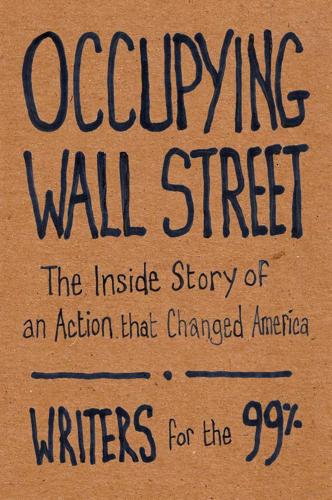
Occupying Wall Street: The Inside Story of an Action That Changed America
by
Writers For The 99%
Published 17 Dec 2011
Although the protests in disparate nations have taken place under different forms of government and have varied in the specificity of their demands, all have expressed a similar outrage with the inequities of unfettered global capitalism. In the first months of 2011, North Africa and the Middle East saw a myriad of popular protests. Unrest in Tunisia broke out on December 17, 2010, after a 26-year-old street vendor, Mohammed Bouazizi, lit himself ablaze because the police kept confiscating his wares to extort money, and he couldn’t support his family of eight. Photos and videos of Bouazizi went viral on Facebook, igniting the rage of a generation of Tunisian youth and sparking colossal street demonstrations that led to the January 14 ouster of Tunisian president Ben Ali.
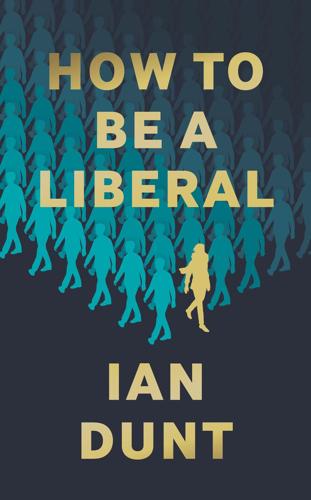
How to Be a Liberal: The Story of Liberalism and the Fight for Its Life
by
Ian Dunt
Published 15 Oct 2020
Social media was a direct threat to the ability of despots to control the flow of information. Until now, they could make sure that the content which went out from national TV studios and was printed in newspapers suited them. Social media changed all that. It democratised information. On 17th December 2010, a Tunisian street vendor named Mohamed Bouazizi set himself on fire in a protest against police harassment. It was captured on a camera phone, uploaded to social media, and spread around the world. Huge protests broke out. Within days, President Zine El Abidine Ben Ali had been overthrown. The video kept spreading. Political demonstrations broke out in Egypt against the dictator Hosni Mubarak.
…
It policed impure political thoughts, creating a climate of fear, shared by everyone, that they would be next, if they framed a thought on race, or sexuality, or identity, or politics, in anything but the most anodyne and inoffensive way. But even though it was loud, it was profoundly unproductive. The early days of social media had involved some degree of moral outrage too. It had motivated those watching the self-immolation of Mohamed Bouazizi to act. But the new breed of moral outrage was not intended to galvanise political organisation. It was intended to demonstrate moral superiority. This completely inverted Taylor and Mill’s insistence that people search for the strongest possible example of their opponent’s argument. Instead, the moral outrage function sought out the weakest and extreme version of the counter-argument, which it could then twist into an encapsulation of their general position.
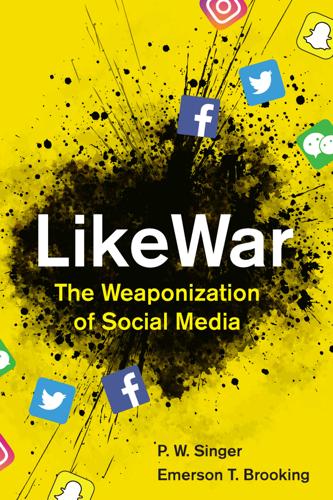
Likewar: The Weaponization of Social Media
by
Peter Warren Singer
and
Emerson T. Brooking
Published 15 Mar 2018
An astounding 98 percent of the links posted on Twitter that week were about Iran. Photos showed tens of thousands of Iranian youth pouring into the streets, a smartphone in nearly every hand. “The Revolution Will Be Twittered,” declared one excited headline. Wired magazine’s Italian edition nominated the internet for a Nobel Peace Prize. In 2010, Mohamed Bouazizi, a 26-year-old Tunisian, touched off the next outbreak of web-powered freedom. Each morning for ten years, he had pushed a cart to the city marketplace, selling fruit to support his widowed mother and five siblings. Every so often, he had to navigate a shakedown from the police—the kind of petty corruption that had festered under the two-decade-long rule of dictator Zine el-Abidine Ben Ali.
…
THE EMPIRES STRIKE BACK 83 “‘Truth’ is a lost cause”: Peter Pomerantsev and Michael Weiss, “The Menace of Unreality: How the Kremlin Weaponizes Information, Culture and Money” (report, Institute of Modern Russia, 2014), http://www.interpretermag.com/wp-content/uploads/2014/11/The_Menace_of_Unreality_Final.pdf. 83 “Information wants”: Steven Levy, “‘Hackers’ and ‘Information Wants to Be Free,’” Backchannel (blog), Medium, November 21, 2014, https://medium.com/backchannel/the-definitive-story-of-information-wants-to-be-free-a8d95427641c. 83 “The Net interprets”: Philip Elmer-Dewitt, “First Nation in Cyberspace,” Time, December 6, 1993, http://kirste.userpage.fu-berlin.de/outerspace/internet-article.html. 83 “the Japanese guy”: Bruce Sterling, “Triumph of the Plastic People,” Wired, January 1, 1995, https://www.wired.com/1995/01/prague/. 84 first so-called internet revolution: Olesya Tkacheva et al., Internet Freedom and Political Space (RAND, 2013), 121. 84 government censors: Lev Grossman, “Iran Protests: Twitter, the Medium of the Movement,” Time, June 17, 2009, http://content.time.com/time/world/article/0,8599,1905125,00.html. 84 98 percent of the links: “Iran and the ‘Twitter Revolution,’” Pew Research Center, June 25, 2009, http://www.journalism.org/2009/06/25/iran-and-twitter-revolution/. 84 “The Revolution”: Andrew Sullivan, “The Revolution Will Be Twittered,” The Daily Dish (blog), The Atlantic, June 13, 2009, http://www.theatlantic.com/daily-dish/archive/2009/06/the-revolution-will-be-twittered/200478/. 84 Nobel Peace Prize: Lewis Wallace, “Wired Backs Internet for Nobel Peace Prize,” Wired, November 20, 2009, https://www.wired.com/2009/11/internet-for-peace-nobel/. 84 Mohamed Bouazizi: Yasmine Ryan, “The Tragic Life of a Street Vendor,” Al Jazeera, January 20, 2011, http://www.aljazeera.com/indepth/features/2011/01/201111684242518839.html. 85 “Is Egypt about to have”: Abigail Hauslohner, “Is Egypt About to Have a Facebook Revolution?,” Time, January 24, 2011, http://content.time.com/time/world/article/0,8599,2044142,00.html. 85 Mubarak’s resignation: Leila Fadel, “With Peace, Egyptians Overthrow a Dictator,” Washington Post, February 11, 2011, http://www.washingtonpost.com/wp-dyn/content/article/2011/02/11/AR2011021105709.html. 85 “just give them”: Jeffrey Ghannam, “In the Middle East, This Is Not a Facebook Revolution,” Washington Post, February 20, 2011, http://www.washingtonpost.com/wp-dyn/content/article/2011/02/18/AR2011021806964.html. 85 “I want to meet”: Sajid Farooq, “Organizer of ‘Revolution 2.0’ Wants to Meet Mark Zuckerberg,” NBC Bay Area, March 5, 2011, https://www.nbcbayarea.com/blogs/press-here/Egypts-Revolution-20-Organizer-Wants-to-Thank-Mark-Zuckerberg-115924344.html. 85 naming his firstborn: Alexia Tsotsis, “To Celebrate the #Jan25 Revolution, Egyptian Names His Firstborn ‘Facebook,’” TechCrunch, February 20, 2011, https://techcrunch.com/2011/02/19/facebook-egypt-newborn/. 85 the Arab Spring: Kentaro Toyama, “Malcolm Gladwell Is Right: Facebook, Social Media and the Real Story of Political Change,” Salon, June 6, 2015, http://www.salon.com/2015/06/06/malcolm_gladwell_is_right_facebook_social_media_and_the_real_story_of_political_change/. 86 “organize without organizations”: Clay Shirky, Here Comes Everybody: The Power of Organizing Without Organizations (Penguin, 2008). 86 “the liberating power”: Roger Cohen, “Revolutionary Arab Geeks,” New York Times, January 27, 2011, http://www.nytimes.com/2011/01/28/opinion/28iht-edcohen28.html. 86 “We had an arsenal”: Evgeny Morozov, The Net Delusion: The Dark Side of Internet Freedom (PublicAffairs, 2011), loc. 250, Kindle. 86 “an enthusiastic belief”: Ibid., loc. 223–31. 87 Liu was a new arrival: Charles Liu, “Chinese Guy, Angry at Embarrassing Photos Circulating Online, Tries to Destroy Internet, “Nanfang, August 26, 2016, https://thenanfang.com/man-tries-prevent-online-humiliation-destroying-public-internet-routers/. 87 Liu was sent to prison: “The Man Was Sneered by the Jump Square Dance Maliciously Disrupting the Communications Cable,” trans.
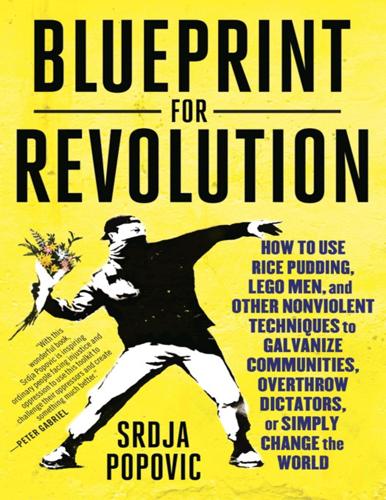
Blueprint for Revolution: How to Use Rice Pudding, Lego Men, and Other Nonviolent Techniques to Galvanize Communities, Overthrow Dictators, or Simply Change the World
by
Srdja Popovic
and
Matthew Miller
Published 3 Feb 2015
Hundreds of thousands of Egyptians “liked”—what an awful use of the phrase—Ghonim’s page, and the outrage stirred up by Khaled’s death was one of the sparks that Mohammed Adel and the April 6 organization used to launch the Egyptian Revolution. Because the police decided to murder him for no reason, Khaled Said went from being an anonymous kid in Alexandria to a national icon and a trigger for regional upheaval. Much like the suicide of Mohammed Bouazizi, the Tunisian fruit vendor who was humiliated by the police and set himself on re to protest the misery and oppression that he endured every day at the hands of the government, the murder of Khaled Said proved once again that occasionally bills do get sent to dictators for their crimes. And trust me, there’s always a way to make the bad guys pay.
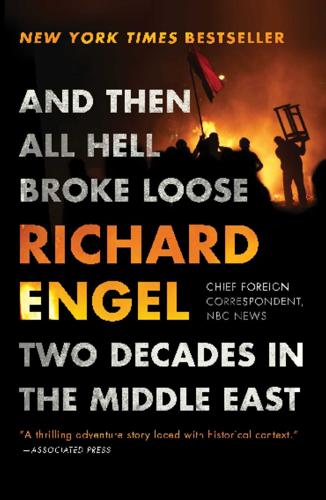
And Then All Hell Broke Loose: Two Decades in the Middle East
by
Richard Engel
Published 9 Feb 2016
The place badly needed renovating, which took almost a year. I went on a lot of long reporting trips so I could get away from the city. But New York was a blessing in one respect: I began a relationship with Mary Forrest, now my wife and mother of our child. I didn’t take much notice when a Tunisian street vendor named Mohamed Bouazizi set himself on fire to protest the confiscation of his produce by municipal officials. Tunisia, after all, is a small country (population 10.5 million), bounded on two sides by the Mediterranean and overshadowed by Libya, its large neighbor to the east, formerly led by the crackpot regime of Mu’ammar Gadhafi.
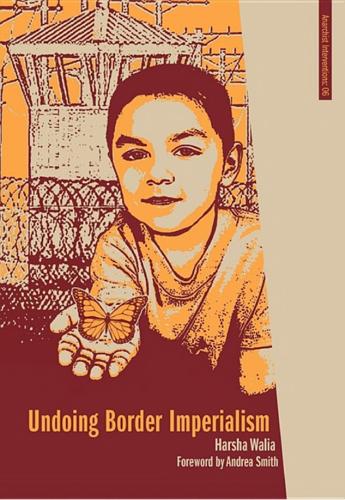
Undoing Border Imperialism
by
Harsha Walia
Published 12 Nov 2013
Around the world glimmers of other ways of living, not clear still, are lighting up streets and alleys, neighborhoods and academies, the world over. The simmers and the ashes of these fires rest in communities of the dispossessed. Be it the riots that began in anger over the murder of Alexandros Grigoropoulos in Greece or the self-immolation of Mohamed Bouazizi in Tunisia, uprisings are, as they always have been, rooted in the lives and bodies of those who do not have the option of speaking politely, and just stopped running. The Undocumented and Unafraid actions emerging out of the United States, the Sans Papiers movement in France, or the migrants’ assemblies in Greece are all moments where people are turning from running to fighting.
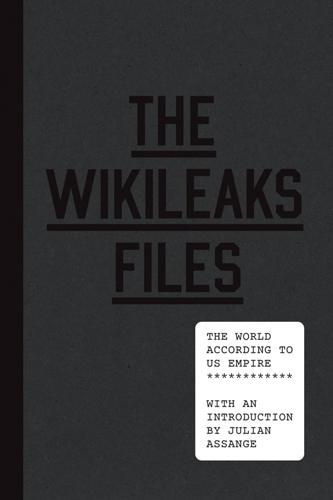
The WikiLeaks Files: The World According to US Empire
by
Wikileaks
Published 24 Aug 2015
Later, Turkish president Recep Tayyip Erdoğan—an elected leader, but an increasingly erratic, authoritarian one—would blame drunks, Twitter users, and terrorists. But these men were hardly the only ones inconvenienced by the turmoil. It had begun with a popular movement in Tunisia, precipitated by the self-immolation of Tunisian street vendor Mohamed Bouazizi on December 18, 2010. Bouazizi was protesting at the confiscation of his wares and the routine harassment he suffered at the hands of the authorities. His complaints resonated with the experiences and dissatisfactions of a wide layer of the population, who began to mount regular, sustained protests.
…
For Tunisians reading them, the surprise was not the revelation of corruption, but the bluntness of the US assessment of the regime. Upon spotting the leaks, the regime went into panic mode. In December 2010 it tried to block access to websites carrying the cables, focusing specifically on the popular, progressive Beirut newspaper Al-Akhbar.21 Within a matter of days of this intervention, the street trader Mohamed Bouazizi set fire to himself in protest at the brutal and unjust treatment he had received at the hands of police. Bouazizi’s complaints were not just about intolerable state abuse, however, but also invoked the declining standard of living that he, like many Tunisians, had suffered since the global financial crash, symbolized by soaring food prices and high unemployment.
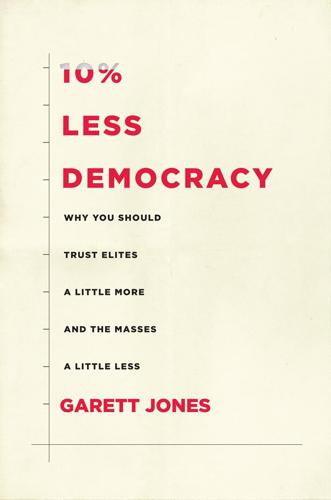
10% Less Democracy: Why You Should Trust Elites a Little More and the Masses a Little Less
by
Garett Jones
Published 4 Feb 2020
Now, newspapers and TV are just two ingredients, no longer even critical ingredients, in the global information stew. One of Gurri’s illustrations comes from looking at the dog that didn’t bark, the story that didn’t get covered. As is well known, the Arab Spring found its catalyst—Gurri’s tragically descriptive word—in a photo posted on Facebook of Mohamed Bouazizi, a Tunisian street vendor who set himself on fire amid deep despair after enduring humiliations from government officials. This one man’s sacrifice set off a regional revolution; Bouazizi was posthumously awarded the European Union’s prestigious Sakharov Prize for Freedom of Thought, a sign of his importance in spurring the Arab Spring.

The Great Wave: The Era of Radical Disruption and the Rise of the Outsider
by
Michiko Kakutani
Published 20 Feb 2024
Think how Colin Kaepernick’s decision to take a knee—to protest police brutality—during the playing of the national anthem at NFL games became recognized around the world as a symbol of solidarity with the fight for racial justice. Remember how the Arab Spring was ignited by the desperate act of an impoverished Tunisian fruit vendor named Mohammed Bouazizi, who set himself on fire on December 17, 2010, after continual harassment from local authorities who refused to give him a permit to sell his wares, confiscated his goods, and publicly humiliated him. * * * — As Marshall McLuhan and Neil Postman have pointed out, new information technologies create new environments that reformat how we apprehend the world; in McLuhan’s famous words, “the medium is the message.”
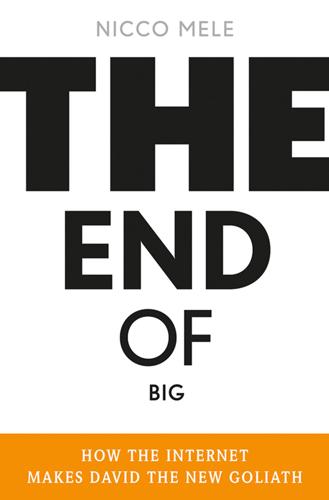
The End of Big: How the Internet Makes David the New Goliath
by
Nicco Mele
Published 14 Apr 2013
With Tunisians facing rising inflation and high unemployment, the conspicuous displays of wealth and persistent rumors of corruption have added fuel to the fire.36 Average Tunisians knew all about the corruption of their leaders. But to have the United States—the world’s most powerful country—documenting it with a combination of bemusement, horror, and disgust was a humiliating wake-up call. General dissatisfaction and unrest in Tunisia grew, not to mention political dissension and activism. Mohammed Bouazizi, an unknown twenty-six-year-old in a rural Tunisian town, gave voice to the growing national frustration. After he was harassed into paying another round of bribes to the local authorities, he doused himself with gasoline, and lit a match while shouting, “How do you expect me to make a living?”

The Twittering Machine
by
Richard Seymour
Published 20 Aug 2019
Most social industry users, still a minority of the population, were on Facebook.33 In Egypt, where the social industry had much deeper penetration, with 60 per cent of under-thirties using it, the April 6 Youth Movement was able to use Facebook as a communications hub. Other activists, however, found that mobile texting was far more important for organizing. Nonetheless, when the desperate Tunisian market seller, Mohamed Bouazizi, set himself on fire after being harassed by police, it became known only because the images were shared on Facebook and resonated with an existing mood of fury with the regime. When the Tahrir Square protesters flooded timelines with the riveting detail of their audacious actions, they not only increased the costs of repression for the regime and weakened the position of its overseas backers, but gave confidence to others to join in.
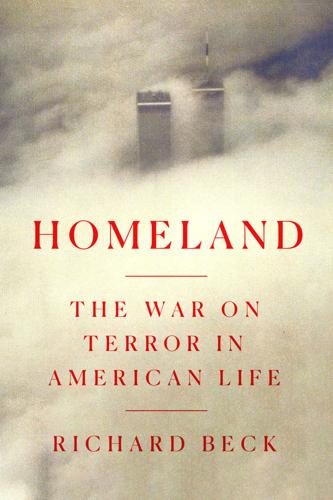
Homeland: The War on Terror in American Life
by
Richard Beck
Published 2 Sep 2024
Just as not hearing about the working conditions under which Apple’s iPhones and Nike’s sneakers are produced makes it easier for Americans to keep spending money on iPhones and Air Force 1s, not having to confront the human refuse of the global economic system makes it easier to continue supporting that system. The border system tries to keep out migrants whose poverty might complicate that support just as an individual’s psychological defense mechanisms try to shield them from intrusive feelings of anxiety or guilt. In late 2010, however, Mohamed Bouazizi, an impoverished twenty-six-year-old fruit vendor who lived in the Tunisian city of Sidi Bouzid, decided he couldn’t stand any more police harassment and set himself on fire. The revolutions and civil wars that followed threw much of the Middle East into crisis, and for a brief time the plight of surplus populations in the Arab world, at least, would be impossible to ignore
…
Chastened by Saddam’s downfall and awed by America’s rejuvenated global prestige, they would eject the hard-liners from government, make their economies more receptive to international capital, and bring their own political systems more in line with that of the world’s unquestioned superpower. What happened instead was that an explosive series of social and political revolutions toppled leaders across the region. Within a month of Mohamed Bouazizi’s self-immolation, protests had spread from Tunisia to Yemen, Egypt, Oman, Jordan, Morocco, and Syria. The Tunisian government was overthrown on January 14, 2011, and President Zine El Abidine Ben Ali fled to Saudi Arabia with his wife and children. A week and a half later, thousands of protesters began to fill Tahrir Square in Cairo.
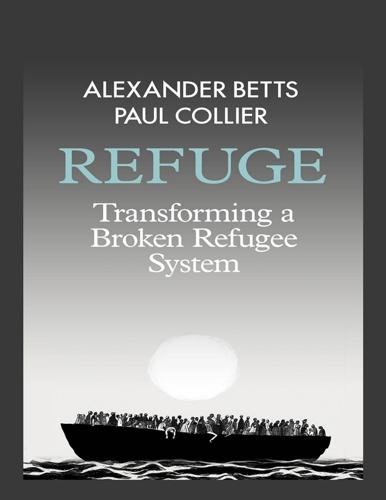
Refuge: Transforming a Broken Refugee System
by
Alexander Betts
and
Paul Collier
Published 29 Mar 2017
By 2015, with its economy having contracted by a catastrophic 25 per cent, the government in charge of coping with this nightmare, including the reform of deeply flawed public services, was an untested party of the radical left, Syriza. The tinder box was fully prepared, ready for a spark. THE SPARK The spark duly came in the form of the poignantly named ‘Arab Spring’.1 A young Tunisian who had a market stall became so frustrated that he set fire to himself and died of his burns. The match struck by Mohamed Bouazizi on 17 December 2010 became the equivalent of the bullet fired by the assassin Gavrilo Princip which killed Archduke Franz Ferdinand and triggered the First World War. The southern coast of the Mediterranean had long been under the control of a monarchy in Morocco, and three dictators in Tunisia, Egypt and Libya.

No Ordinary Disruption: The Four Global Forces Breaking All the Trends
by
Richard Dobbs
and
James Manyika
Published 12 May 2015
As a result, more organizations may find, as Clarks Village did, that the world is beating a new, entirely unpredicted path to their doorstep—at the same time that consumers in markets previously considered closed off are acquiring a taste for the types of products they make. Smart companies that systematically rethink the way they approach, manage, and serve all the world’s promising markets can figure out how to meet customers where they are—and where they will be. 6 REVERSING THE CYCLE Resource Opportunity IN DECEMBER 2010, MOHAMED BOUAZIZI, A TUNISIAN STREET FOOD vendor in the town of Sidi Bouzid, set himself on fire to protest harassment by municipal authorities. This single act became the well-known trigger for the protests that led to the ousting of Tunisian president Zine El Abidine Ben Ali.1 Tunisia was simply the initial opening act of the Arab Spring, a long-running drama that gripped the Middle East and North Africa in 2011 and 2012.
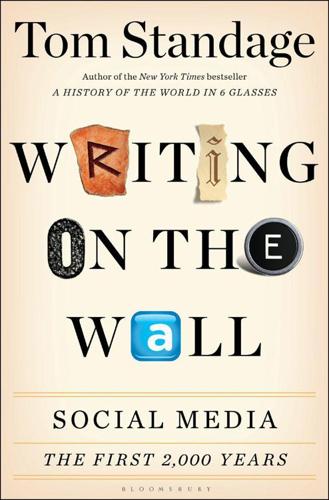
Writing on the Wall: Social Media - the First 2,000 Years
by
Tom Standage
Published 14 Oct 2013
Given how widely used social sites have become, it is hardly surprising that, like earlier forms of social media, they have started to have social and political impact, particularly in countries where publishing has traditionally been tightly restricted. SOCIAL MEDIA IN THE ARAB SPRING AND BEYOND On December 17, 2010, a twenty-six-year-old Tunisian fruit seller, Mohamed Bouazizi, had his produce and weighing scales confiscated by police in his home town of Sidi Bouzid. Exasperated by repeated harassment and insults from officials, he went to the regional governor’s office to complain. When the governor refused to see him, Bouazizi doused himself with fuel, cried out, “How do you expect me to make a living?”
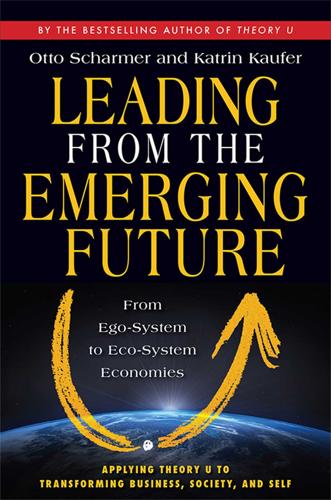
Leading From the Emerging Future: From Ego-System to Eco-System Economies
by
Otto Scharmer
and
Katrin Kaufer
Published 14 Apr 2013
Today the remaining Wall Street megabanks and their European counterparts have survived because of massive taxpayer-financed bailouts from their governments. On October 11 of that year, the head of the International Monetary Fund (IMF) warned that the world financial system was teetering on the “brink of systemic meltdown.”1 In December 2010, Mohamed Bouazizi, a young fruit and vegetable seller in Tunisia, set himself on fire in protest of his treatment by police, who wanted to extract bribes from him and, when he refused, took away his merchandise and beat him. In January 2011, a twenty-six-year-old Egyptian activist, Asmaa Mahfouz, posted a video online urging people to protest the “corrupt government” of Egypt’s president, Hosni Mubarak, by rallying in Cairo’s Tahrir Square.2 With that video she sparked and inspired an uprising among the Egyptian population.
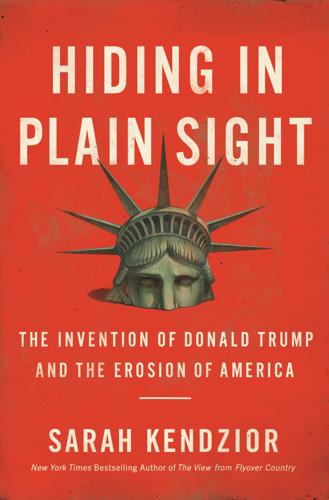
Hiding in Plain Sight: The Invention of Donald Trump and the Erosion of America
by
Sarah Kendzior
Published 6 Apr 2020
As economies tanked and opportunities vanished, protests broke out in North America, the Middle East, Europe, and parts of Asia. While every protest was unique, all reflected the despair citizens felt as rulers responded to economic misery with ruthless indifference. Tunisia’s revolution, for example, began in 2010 when a man, Mohamed Bouazizi, set himself on fire to protest government apathy to mass unemployment. The new era of uprisings coincided with the rise of smartphones and social media, meaning that demonstrators not only became more visible, but that their methods of mobilization changed—as did state surveillance and retaliation.
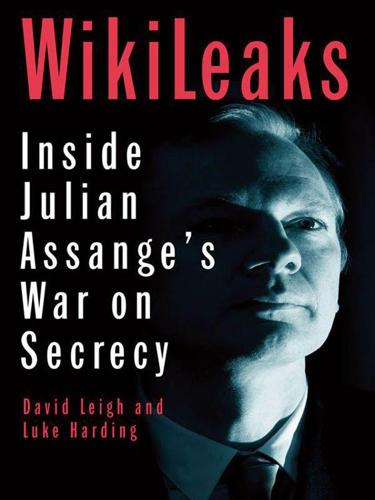
The End of Secrecy: The Rise and Fall of WikiLeaks
by
The "Guardian"
,
David Leigh
and
Luke Harding
Published 1 Feb 2011
Following the publication of excoriating leaked cables from the US mission in Tunisia, about the corruption and excess of the ruling family, tens of thousands of protesters rose up and overthrew the country’s hated president, Zine al-Abidine Ben Ali. Was this a WikiLeaks revolution? Not quite. It began after an unemployed 26-year-old university graduate, Mohammed Bouazizi, set fire to himself in desperation. Officials had prevented him from selling vegetables. His death triggered nationwide rioting over joblessness and political repression. It was long-simmering frustrations with the Ben Ali regime which were behind the revolt. The Tunisians were the first people in the Arab world to take to the streets and oust a leader for a generation.
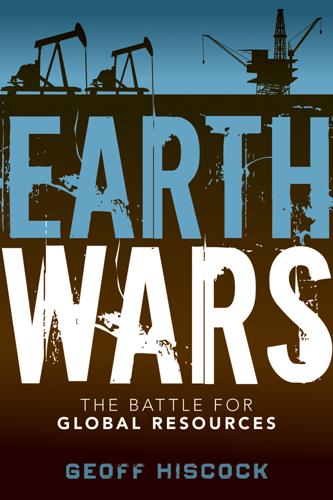
Earth Wars: The Battle for Global Resources
by
Geoff Hiscock
Published 23 Apr 2012
Russia, Brazil, China, Africa, and the North Sea were all on the agenda, but it was the recent cataclysmic events in North Africa and the Middle East—and the likely response from the oil cartel known as OPEC (the Organization of Petroleum Exporting Countries)—that figured high in their calculations of where oil demand and oil prices were headed. Tunisia Heralds Arab Spring It had started in Tunisia six months earlier, in December 2010. On a Friday morning in the rural town of Sidi Bouzid, 250 km south of the capital Tunis, a 26-year-old fruit and vegetable seller named Mohammed Bouazizi found himself in dispute with municipal authorities over his lack of a street vendor’s licence. His goods were seized, his family insulted. Bouazizi, humiliated by the officials and stripped of his sole source of income, made his way to the governor’s office to complain. When he was turned away without a hearing, he set himself alight in protest.
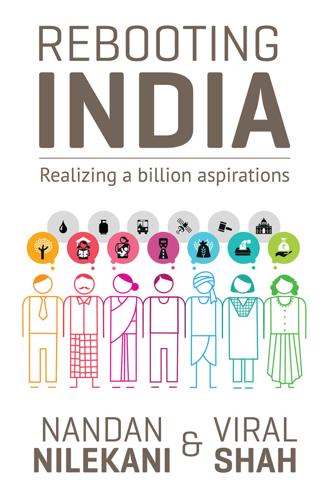
Rebooting India: Realizing a Billion Aspirations
by
Nandan Nilekani
Published 4 Feb 2016
Grain rots in warehouses while the poor go hungry; although India has one of the biggest grain stockpiles in the world, and even exports some of it to countries like Saudi Arabia and Australia, one-fifth of the Indian population remains malnourished.7 When these distribution systems fail, they hit precisely those people with the least resources to weather the storm on their own. Farmers in Karnataka set fire to buses; in Tunisia, a poor street-food vendor harassed by the police set fire to himself instead, triggering the Arab Spring revolutions in the process. While Mohamed Bouazizi was protesting police brutality, underlying the complex web of events that brought nations to the brink of civil war was a rise in food prices;8 heavily dependent on foreign imports, these countries were deeply vulnerable to spikes in world food prices that the subsidies provided by their governments could not absorb.
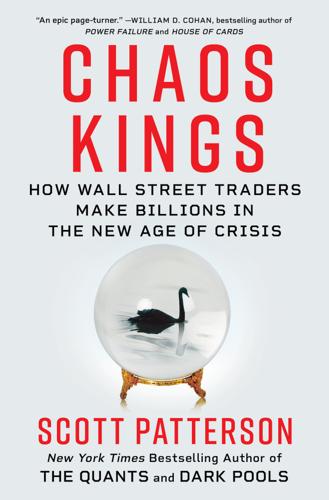
Chaos Kings: How Wall Street Traders Make Billions in the New Age of Crisis
by
Scott Patterson
Published 5 Jun 2023
The second was the use of American corn to make ethanol, which saw a huge increase under the George W. Bush administration. The spike in food prices combined with signs of mounting social unrest and political instability led Bar-Yam to predict extreme turmoil in the Middle East and Northern Africa. In December, he reported his expectations to the U.S. government. Days later, Mohamed Bouazizi, a twenty-six-year-old fruit and vegetable vendor in Tunisia harassed by local police, lit himself on fire and died, sparking waves of protest that quickly spread to other countries in what became known as the Arab Spring. Bar-Yam’s uncannily accurate forecast put him in the international spotlight along with the emerging science of complex systems.

This Is for Everyone: The Captivating Memoir From the Inventor of the World Wide Web
by
Tim Berners-Lee
Published 8 Sep 2025
I felt this was a privacy violation, and in talks, I began to speak of the concept of ‘data sovereignty’ – the idea that you, not Facebook, should own your profile and your history of interactions. • The first large-scale demonstration that social media was going to transform society was the ‘Arab Spring’ protests. The wave of unrest began with Mohamed Bouazizi, a street cart vendor from Tunisia who had suffered a lifetime of harassment and petty extortion from regional officials. The final straw came on 17 December 2010, when his digital scale was confiscated by a local police officer. Bouazizi went to the governor’s office to complain; when the governor refused to see him, Bouazizi stood in the middle of the road outside the building, doused himself in gasoline and set himself on fire.
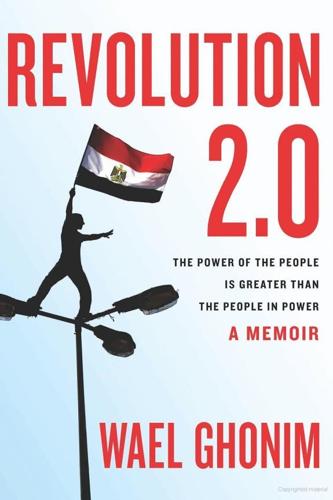
Revolution 2:0: A Memoir and Call to Action
by
Wael Ghonim
Published 15 Jan 2012
Yet on December 30, I posted: * * * January 25th is Police Day and it’s a national holiday . . . I think the police have done enough this year to deserve a special celebration . . . What do you think? 471 Likes 119 Comments * * * 5. A Preannounced Revolution ON DECEMBER 17, 2010, Mohamed Bouazizi, an unlicensed vegetable-cart operator in Sidi Bouzid, a town 190 miles south of Tunis, had his cart confiscated by a policewoman, and when he complained to her, she allegedly slapped his face, humiliating him in front of everyone. He went to police headquarters to lodge a complaint, but the officers refused to see him.
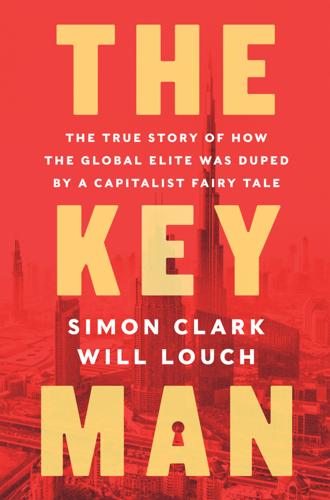
The Key Man: The True Story of How the Global Elite Was Duped by a Capitalist Fairy Tale
by
Simon Clark
and
Will Louch
Published 14 Jul 2021
The triggers for the tumult were poverty and unemployment—precisely the problems Obama and Arif had identified and wanted to solve. But their efforts proved too little and too late to stop the chaos that was about to unfold. On the morning of December 17, 2010, a Tunisian street vendor called Mohamed Bouazizi was pushing a small wheelbarrow piled high with fruit and vegetables through his hometown of Sidi Bouzid. Bouazizi had borrowed about $200 to buy the produce and was going to sell it in the streets that day to earn money for his family. But police officers confiscated his cart and insulted him.
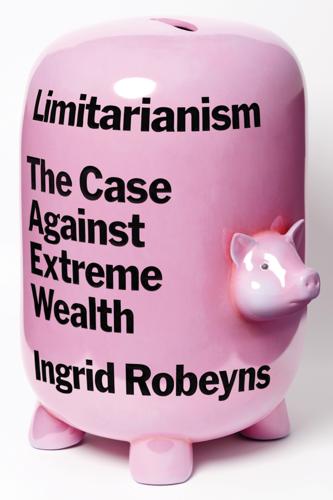
Limitarianism: The Case Against Extreme Wealth
by
Ingrid Robeyns
Published 16 Jan 2024
Too many of us have no experience of activism and organizing, and hence do not know what enormous potential there is in acting together to fight for justice or to defend a common interest. Yet if there is, as many suspect, a fuse waiting to be lit, it might only need a spark. We saw this during the Arab Spring. In January 2011, the Tunisian street vendor Mohamed Bouazizi set himself on fire when he could no longer stand his repeated humiliation and harassment by a municipal officer, which had culminated in the confiscation of his wares. His heartbreaking act triggered a series of protests that would ultimately bring down several regimes across the Middle East, in Libya, Egypt, and Yemen.
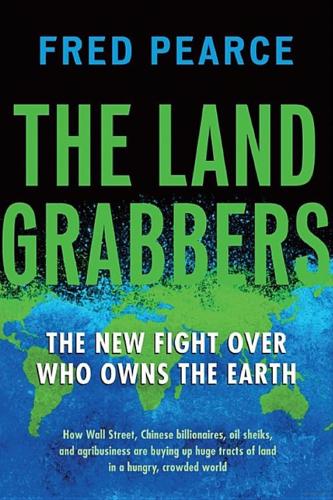
The Land Grabbers: The New Fight Over Who Owns the Earth
by
Fred Pearce
Published 28 May 2012
By early 2011, the Middle East and North Africa were erupting with the Arab Spring. While the Western media concentrated on the politics of reform, many on the streets were protesting as much about bread prices as corruption. They were waving baguettes as they marched into Cairo’s Tahrir Square and Tunis’s November 7 Square (now renamed Mohamed Bouazizi Square, after the vegetable seller whose suicide sparked the revolution). In Yemen they turned on their leaders with chapatis strapped to their temples. The only Gulf state directly impacted by the uprising was Bahrain. But this was uncomfortably close for many of the region’s autocrats.

Mbs: The Rise to Power of Mohammed Bin Salman
by
Ben Hubbard
Published 10 Mar 2020
Sometimes, that meant writing for cash, as when a contact wired him $100,000 in 2009 to do a sympathetic interview with Prime Minister Najib Razak of Malaysia. At times, his own views diverged from those of the Saudi leadership, especially after the Arab Spring uprisings spread across the Middle East in 2011. Khashoggi was moved by the story of Mohamed Bouazizi, the Tunisian fruit vendor who had set himself on fire after a confrontation with the police, becoming a symbol of how repressive regimes dashed the hopes of young Arabs. As the uprisings spread, Khashoggi was optimistic that the protests in Tunisia, Egypt, and Syria would pave the way for democracy.
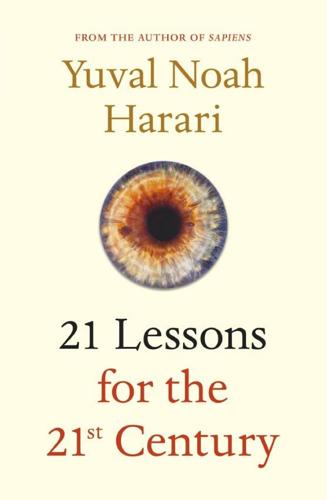
21 Lessons for the 21st Century
by
Yuval Noah Harari
Published 29 Aug 2018
Each of us is ensnared within numerous all-encompassing spider webs, which on the one hand restrict our movements, but at the same time transmit our tiniest jiggle to faraway destinations. Our daily routines influence the lives of people and animals halfway across the world, and some personal gestures can unexpectedly set the entire world ablaze, as happened with the self-immolation of Mohamed Bouazizi in Tunisia, which ignited the Arab Spring, and with the women who shared their stories of sexual harassment and sparked the #MeToo movement. This global dimension of our personal lives means that it is more important than ever to uncover our religious and political biases, our racial and gender privileges, and our unwitting complicity in institutional oppression.
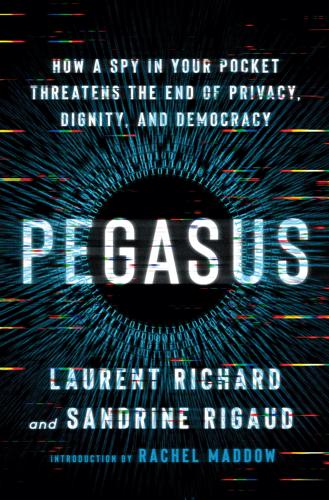
Pegasus: How a Spy in Your Pocket Threatens the End of Privacy, Dignity, and Democracy
by
Laurent Richard
and
Sandrine Rigaud
Published 17 Jan 2023
“It was a loop of about eight people who sent this SMS to each other. And at 6 p.m., when the time came, we were just milling around, smoking a cigarette next to the [police headquarters], and there were police vans filling the whole place.” The real potential of this new technology became clear a few years later. When the self-immolation of a street vendor, Mohamed Bouazizi, sparked democracy protests in Tunisia, social media apps fed an unprecedented wildfire of demonstrations across the Arab world. Laptops and cell phones were the preferred weaponry of the movement. People found they could communicate and organize in relative secrecy on Facebook and Twitter. They leveraged this new reality to inform and encourage protesters who were demanding a more democratic society and governance that answered to the needs of the entire citizenry.
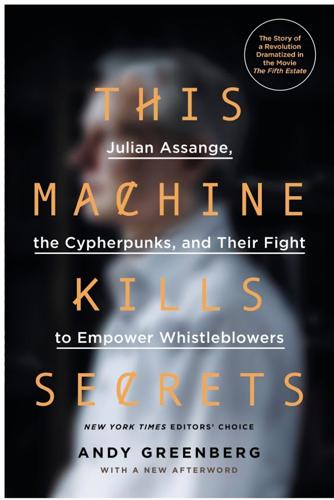
This Machine Kills Secrets: Julian Assange, the Cypherpunks, and Their Fight to Empower Whistleblowers
by
Andy Greenberg
Published 12 Sep 2012
Three weeks after my meeting with Assange, 251,000 once-secret State Department Cables began flowing out of WikiLeaks and would continue for the next year. The documents had too many connections to too many world affairs to draw straight lines between cause and effect. But when a sidewalk vendor named Mohamed Bouazizi set himself on fire in front of the governor’s office in the Tunisian town of Sidi Bouzid, the country’s citizens responded by taking to the streets to overthrow their government. Many of them cited WikiLeaks’ revelations about the U.S. State Department’s disdain for Tunisian president Ben Ali as giving them the courage to oppose their dictator of the prior two-and-a-half decades.

The Wires of War: Technology and the Global Struggle for Power
by
Jacob Helberg
Published 11 Oct 2021
In fact, as protesters with smartphones began massing across the Arab world, it seemed that technology would be a force for liberation. A Man Becomes a Matchstick On December 17, 2010, a man became a matchstick. Angry over years of mistreatment by Tunisian authorities, a twenty-six-year-old street vendor named Mohamed Bouazizi doused himself with paint thinner and set himself on fire in the provincial capital of Sidi Bouzid.105 His act of self-immolation sparked protests; within days, thousands gathered in Tunis to protest the corruption and abuses of President Zine El Abidine Ben Ali. WikiLeaks revelations about the excesses of the president and his family—including his son-in-law flying in ice cream from Saint-Tropez and feeding his pet tiger four chickens a day—further inflamed the protests.106 Demonstrators brandished signs with slogans like “Ben Ali, get lost”107 in what came to be known as Thawrat al-Karāmah, the Revolution of Dignity.108 When snipers fired on the crowds, protesters caught footage of the carnage on their smartphones and shared it widely.109 After a month of protests, and twenty-three years in power, Ben Ali fled to Saudi Arabia.110 Jubilant Tunisians began to draft a democratic constitution.111 By late January, Egyptians were chanting, “We are next, we are next—Ben Ali, tell Mubarak he is next.”112 A Facebook page created by Wael Ghonim, Google’s head of marketing for the Middle East and North Africa, quickly became a platform for coordinating mass protests against Hosni Mubarak, Egypt’s “modern pharaoh.”113 One activist tweeted, “We use Facebook to schedule the protests, Twitter to coordinate, and YouTube to tell the world.”114 Recognizing the central role social media was playing in the demonstrations, Mubarak’s regime attempted to choke off Internet access.
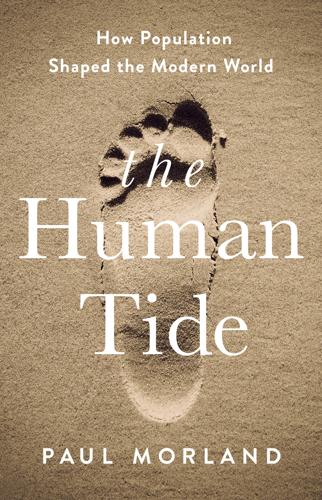
The Human Tide: How Population Shaped the Modern World
by
Paul Morland
Published 10 Jan 2019
It is a dubious trade-off–of current stability for future prospects–and one which nations less advanced in the demographic process, in the Middle East and North Africa for example, are yet to experience. 9 The Middle East and North Africa The Demography of Instability On 17 December 2010 Mohamed Bouazizi, a twenty-six-year-old Tunisian street fruit vendor, set himself on fire in protest at the corrupt and bureaucratic system he encountered while trying to earn a living. His anger and frustration reverberated around a region in which millions of others faced the same frustrations, setting off what came to be known as the Arab Spring, a chain of hopeful revolts against hopeless regimes.
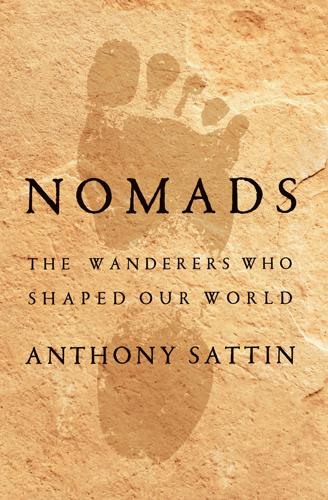
Nomads: The Wanderers Who Shaped Our World
by
Anthony Sattin
Published 25 May 2022
Failure to provide has led to the downfall of rulers and regimes from ancient Rome to the Ancien Régime in France. In our own time, the most obvious way to gauge the health of the economy is the ease with which we can put food on our tables. The so-called Arab Spring of 2011, which brought down several long-entrenched regimes, was sparked by a sudden rise in food prices and the suicide of Mohamed Bouazizi, a Tunisian fruit and vegetable trader. But while surplus levels might have remained volatile, they made settled communal living possible. Çatalhöyük The author of Genesis described what happened between the loss of Eden and the founding of the first city in four hundred words, but the process was long and complicated as is clear from Çatalhöyük.
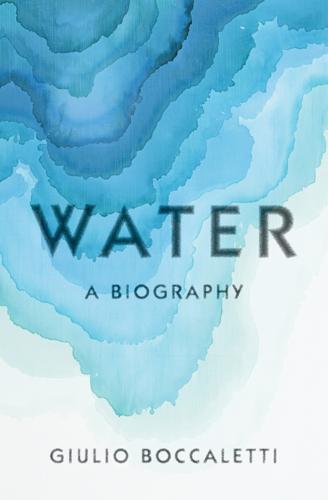
Water: A Biography
by
Giulio Boccaletti
Published 13 Sep 2021
The Middle East and North Africa, where consumer prices were often sensitive to wholesale prices of grain, were particularly hit. Pressure grew on public finances, which attempted to shield consumers through subsidies and household incomes. Then, on December 19, 2010, a fuse was lit and the entire region blew up. The city was Sidi Bouzid, in Tunisia. Twenty-six-year-old Mohamed Bouazizi, a street vendor, had refused to pay a bribe. In retaliation, the police had confiscated the scales from his vegetable cart, his family’s only means of subsistence. Bouazizi set himself on fire in front of the provincial governor’s office. It was a desperate act. Tunisia was quickly engulfed by protests.
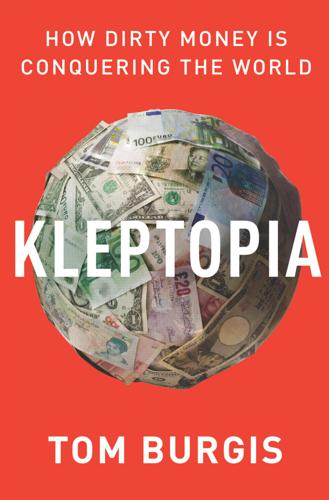
Kleptopia: How Dirty Money Is Conquering the World
by
Tom Burgis
Published 7 Sep 2020
In March 2011, shortly after Egyptians had forced Hosni Mubarak to cede power, a young Syrian took a can of spray paint and wrote on a wall: ‘It’s your turn, doctor.’ The physician he had in mind was the ophthalmologist who controlled Syria, Bashar al-Assad. When the youngster and friends were arrested and tortured, the Syrian revolution began. Assad ruled by theft and fear – like Mubarak, like Ben Ali in Tunisia, who had fallen after Mohamed Bouazizi ignited himself and began an uprising, like Muammar Gaddafi and the king of Bahrain, both of whom deployed troops to uphold kleptocracy. Whichever of them would topple, whichever of them would endure, Nigel understood there was a machine that would continue to ensure that either they or whoever succeeded them could turn power into money and smuggle it out.
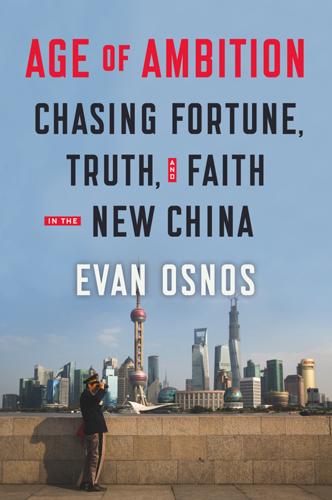
Age of Ambition: Chasing Fortune, Truth, and Faith in the New China
by
Evan Osnos
Published 12 May 2014
But this year, the police told the vendors, no matter what price you are offered, no jasmine. And if anyone comes around asking to buy it, jot down the license plate number and call it in. In Chinese politics, the flower had acquired the aroma of subversion. A few weeks earlier, on December 17, a twenty-six-year-old unemployed graduate in Tunisia named Mohammed Bouazizi was selling fruit without a permit when a police officer confiscated his produce and slapped him for complaining. Bouazizi was the sole earner in an extended family of eleven. He visited the provincial headquarters for help, but nobody would see him. Desperate and humiliated, he doused himself in paint thinner and lit a match.
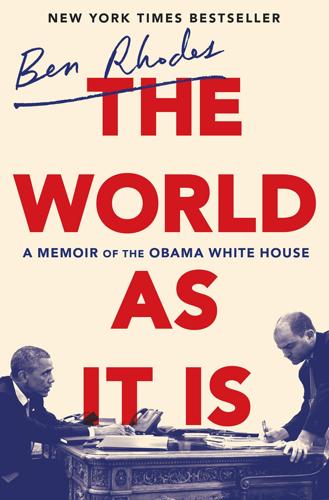
The World as It Is: A Memoir of the Obama White House
by
Ben Rhodes
Published 4 Jun 2018
For a moment, the entire world seemed to quiet. This calm belied a gathering storm. Just a few days earlier, a small story had popped up on my BlackBerry, one of millions of stories that happen every day, most of which lead to nothing beyond the confines of their community. A fruit cart vendor in Tunisia, Mohamed Bouazizi, had grown frustrated by the harassment he faced from corrupt officials and set himself on fire, initiating protests in the small North African nation on the other side of the world. CHAPTER 9 EGYPT The Transition Must Begin Now After we got back from Hawaii, Obama had a call with Hosni Mubarak.
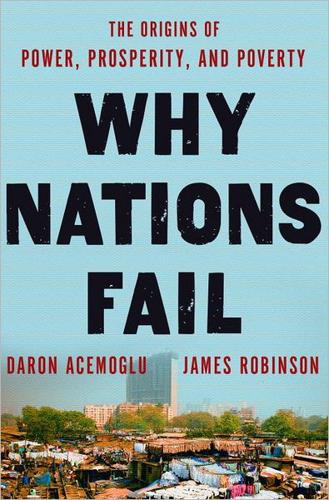
Why Nations Fail: The Origins of Power, Prosperity, and Poverty
by
Daron Acemoglu
and
James Robinson
Published 20 Mar 2012
UNDERSTANDING PROSPERITY AND POVERTY How the world could have been different and how understanding this can explain why most attempts to combat poverty have failed ACKNOWLEDGMENTS BIBLIOGRAPHICAL ESSAY AND SOURCES REFERENCES PREFACE THIS BOOK IS about the huge differences in incomes and standards of living that separate the rich countries of the world, such as the United States, Great Britain, and Germany, from the poor, such as those in sub-Saharan Africa, Central America, and South Asia. As we write this preface, North Africa and the Middle East have been shaken by the “Arab Spring” started by the so-called Jasmine Revolution, which was initially ignited by public outrage over the self-immolation of a street vendor, Mohamed Bouazizi, on December 17, 2010. By January 14, 2011, President Zine El Abidine Ben Ali, who had ruled Tunisia since 1987, had stepped down, but far from abating, the revolutionary fervor against the rule of privileged elites in Tunisia was getting stronger and had already spread to the rest of the Middle East.
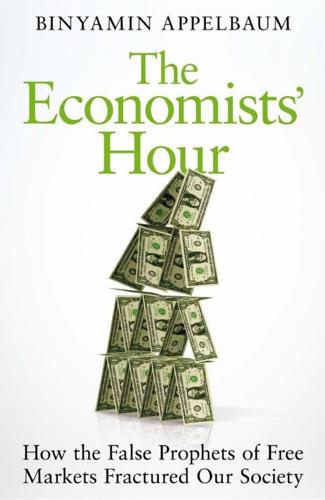
The Economists' Hour: How the False Prophets of Free Markets Fractured Our Society
by
Binyamin Appelbaum
Published 4 Sep 2019
Unemployment is not just a lack of money; it is also a lack of purpose and of opportunity. Alfred Kahn was right to observe that “one cannot simply equate the ‘public interest’ in a democracy with the ‘consumer interest.’ ” He was right to insist people also have interests as producers and as “citizens of an urbanized civilization.” Mohamed Bouazizi, the Tunisian fruit vendor whose self-immolation in 2010 set off the Arab Spring, lived in a nation with a rapidly growing economy. “Judging by economic data alone, the revolutions of the 2011 Arab Spring should have never happened,” the World Bank noted in a 2015 assessment.37 But Tunisians were not satisfied.

Owning the Earth: The Transforming History of Land Ownership
by
Andro Linklater
Published 12 Nov 2013
What motivated them, like the demonstrators in Tunisia who had earlier brought about the overthrow of President Zinelabidine Ben Ali, ruler for twenty-six years, was the discovery of their own entitlement to protest. Hunger had simply dissolved the regime’s aura of authority. In Tunisia, the catalyst came from the desperate choice of the street-seller Mohammed Bouazizi to burn himself to death rather than tolerate more bureaucratic bullying from officials incapable even of maintaining adequate supplies of food. As the Tunisian poet Abolkacim Ashabi wrote, “If the people one day decide to live, fate must answer and the chains must break.” The Tunisians themselves named the uprising that threw out Ben Ali’s rule “The Dignity Revolution.”

The Price of Time: The Real Story of Interest
by
Edward Chancellor
Published 15 Aug 2022
Flooding across South East Asia affected the rice harvest, driving up rice futures by more than 50 per cent.16 THE ARAB SPRING On 17 December 2010, a young Tunisian street vendor doused his clothes with petrol and set himself alight outside the Governor’s office in the provincial town of Sidi Bouzid. Mohamed Bouazizi committed suicide in protest against the actions of local police who had confiscated his wares and smashed his cart. The day after his death riots broke out in Sidi Bouzid. Unrest spread rapidly across North Africa and the Middle East. Within a month Tunisian President Zine El Abidine Ben Ali had been forced from office, followed soon after by the departure of Libya’s Colonel Gaddafi and Egypt’s Hosni Mubarak.
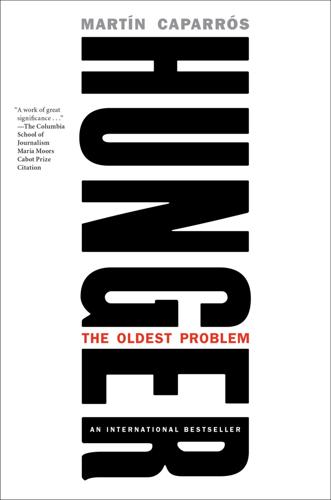
Hunger: The Oldest Problem
by
Martin Caparros
Published 14 Jan 2020
But two years later, prices climbed right back up to precrisis levels causing yet another widespread hunger panic. Perhaps the most spectacular effect—and I mean, spectacular—of this development was the Arab Spring, and unbelievably, such a monumental event was arguably and literally sparked by one man. Mohamed Bouazizi, was known to friends as Basbousa, an epithet that referenced a North African cake made from semolina and honey. But in fact, eating Basbousa cake was likely a luxury Bouazizi could not afford. He had lost his father when he was three years old, and from the age of thirteen, he had to earn money to help feed his mother and younger siblings.
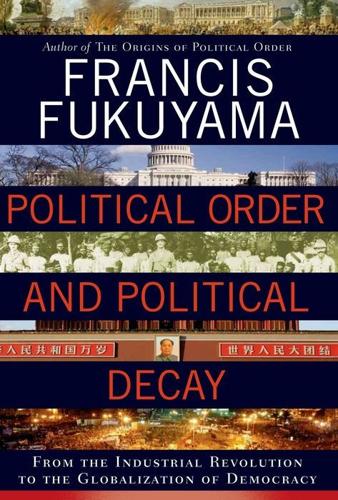
Political Order and Political Decay: From the Industrial Revolution to the Globalization of Democracy
by
Francis Fukuyama
Published 29 Sep 2014
The European road to democracy was long indeed. 29 FROM 1848 TO THE ARAB SPRING Origins of the Arab Spring; differences and similarities between the contemporary Middle East and nineteenth-century Europe; religion and nationalism as alternative routes to political mobilization The Arab Spring began in January 2011 with the self-immolation of a Tunisian street vendor named Mohamed Bouazizi, which brought down the dictatorship of Zine al-Abidine Ben Ali and triggered a cascade of uprisings that spread to Egypt, Yemen, Libya, Bahrain, and Syria, and threatened the stability of every regime in the region. Bouazizi, according to press reports, had his produce cart confiscated on several occasions by the police; when he went to protest, he was slapped and insulted by police officials.

The 9/11 Wars
by
Jason Burke
Published 1 Sep 2011
Dismissing Mubarak as ‘the biggest Arab Zionist’, fifty-nine-year-old Ayman al-Zawahiri warned that democracy meant ‘that sovereignty is subject to the desires of the majority, without committing to any quality, value or creed’.48 His views on Egypt could not have been more distant from the sentiments expressed by those participating in the unrest and apparently shared by so many others. The senior leadership of al-Qaeda had apparently little to say about events in Libya either, even as once again a Western-led military operation was launched against an Arab, Muslim-majority state. In Tunisia, it had been the spectacular and public suicide of fruit and vegetable seller Mohammed Bouazizi – in which no one else was hurt – that had set off the uprising that overturned the regime of ben Ali. It was almost impossible to imagine an act that would undermine the tactics of al-Qaeda – suicides in which many people, often entirely innocent, were killed or maimed – more effectively. The same could be said for demonstrators in Syria, Bahrain and elsewhere, all of whom were resolutely non-violent.

Behave: The Biology of Humans at Our Best and Worst
by
Robert M. Sapolsky
Published 1 May 2017
And there are whistle-blowers who took great risks to trigger change—Daniel Ellsberg, Karen Silkwood, W. Mark Felt (Watergate’s Deep Throat), Samuel Provance (the U.S. soldier who revealed the abuses at Abu Ghraib Prison), Edward Snowden.* But there are also lesser-known people, acting alone or in small numbers, with extraordinary impact. Take Mohamed Bouazizi, a twenty-six-year-old fruit seller in Tunisia, then in its twenty-third year of corrupt and repressive rule by a dictator. At the market the police hassled Bouazizi about an imaginary permit, expecting a bribe. He refused, not out of principle—he’d often bribed—but because he lacked the money.
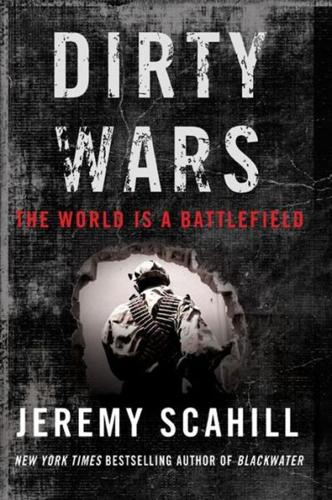
Dirty Wars: The World Is a Battlefield
by
Jeremy Scahill
Published 22 Apr 2013
Their mission: to kill the most wanted man in the world. The Tsunami of Change AUSTRIA AND YEMEN, 2011 —In mid-2011, Yemen was caught up in the revolution that was sweeping the Arab world. The popular revolt against oppressive regimes in the region had begun on December 17, 2010, when Mohamed Bouazizi, a twenty-six-year-old street vendor in Tunisia, took the ultimate stand. The young fruit-and-vegetable seller struggled every day in the poor rural city of Sidi Bouzid to make ends meet, facing constant harassment from local police and municipal employees who demanded bribes from him. On this particular day, Tunisian officials stripped him of his only source of income—when they confiscated his cart and goods because he did not have the proper permit.

The Quest: Energy, Security, and the Remaking of the Modern World
by
Daniel Yergin
Published 14 May 2011
He had lived there, hidden with no Internet connection, for several years, just 35 miles from Islamabad, Pakistan’s capital. His communications with Al Qaeda were by couriers. Among the materials seized in the raid were plans for attacking oil tankers. THE SOCIAL FOUNDATIONS In December of 2010, Mohammed Bouazizi, a young fruit vendor in the Tunisian town of Sidi Bouzid, reached the breaking point. For years, the police had been harassing him and stealing his fruit, along with that of the other vendors in the fruit market on the main street. When he tried to stop a policewoman from stealing two baskets of apples, two other policemen held him down while the policewoman slapped him.